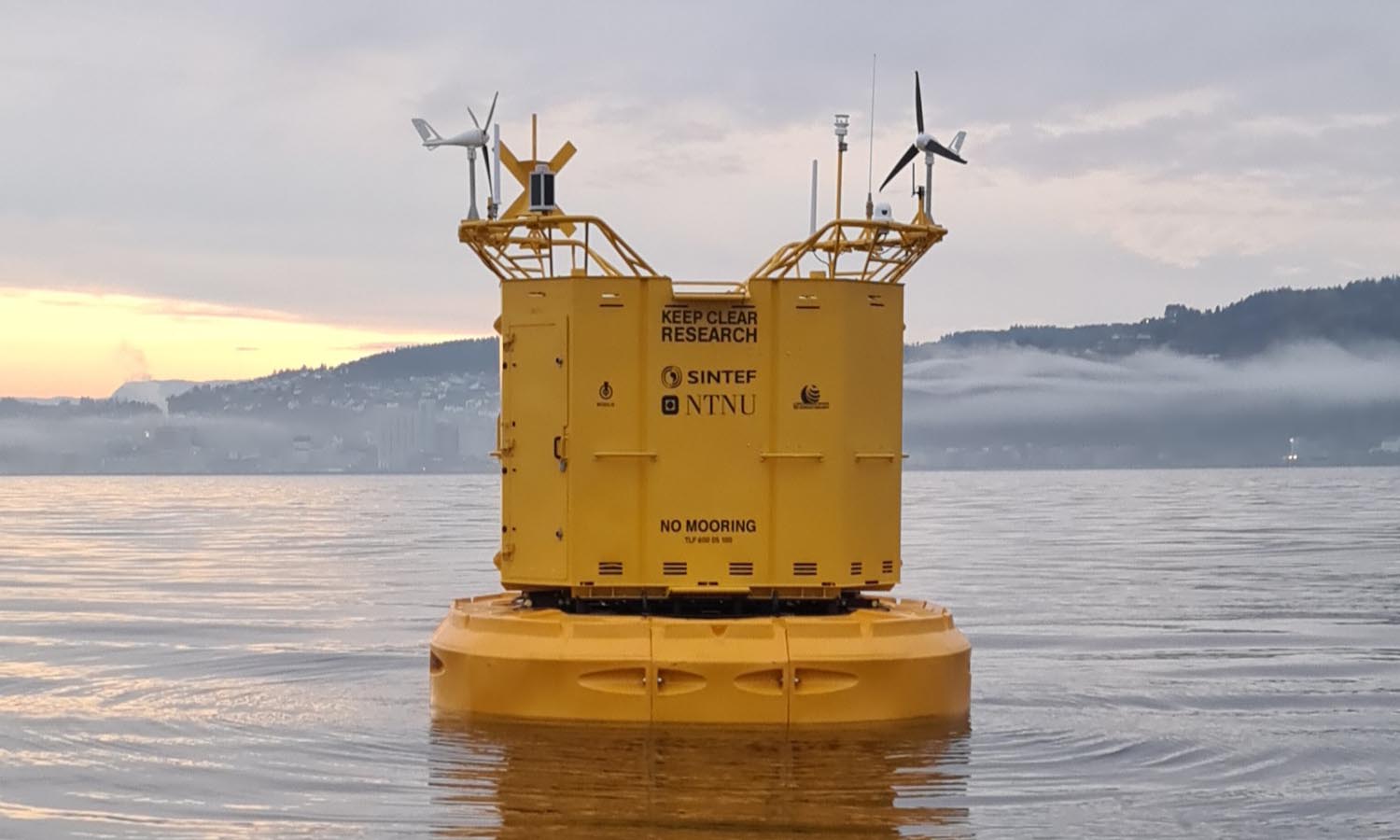Protecting ocean health is vital for safeguarding the future of our planet. At the recent UN Climate Change Conference (COP26), the UK government pledged to invest in climate research to create a healthy, resilient and biodiverse ocean. As such, there is a need for more tools for marine health analysis.
Hydrosphere and Mobilis have worked together for many years to supply bespoke and reliable data buoys for customers such as Plymouth Marine Laboratory (PML). In 2020, PML received Mobilis’ largest data buoy — the DB 14000 — to aid its research at the Western Channel Observatory and provide an innovation platform to Smart Sound Plymouth.
This year, Hydrosphere and Mobilis delivered a project for SINTEF, one of Europe’s largest independent research organisations, which required a buoy capable of taking measurements for the OceanLab Marine Observatory in Norway. As a result, the DB 24000 — an autonomous floating laboratory off the coast of Trondheim — was conceived.
Overcoming challenging conditions in the Norwegian Sea
Designing, supplying and deploying the DB 24000 was no easy feat. The temperature in the Trondheim Fjord sits between -20°C to -30°C during the colder months. So, not only did the buoy need to function optimally in these conditions, but it also had to continue taking measurements throughout the Norwegian winters when there are few hours of sunlight to recharge solar panels.
As a result, an innovative hybrid power production system that combines wind, solar and a methanol fuel cell was installed to power the buoy. Additionally, the floating structure needed a large mast to support the solar panels and wind turbines that power the equipment. The end product is a massive five metres in diameter and 12 tonnes in weight — and has full integration capabilities to support the volume of equipment and energy required to remain self-sufficient.
The environmental observatory littoral (EOL) buoy features an automatic, ‘smart’ winch that carries an impressive array of sensors used by researchers to detect ocean conditions. Winch speed, depth and dive frequency are remotely controllable, allowing users to safely lower a cage of equipment up to 55 metres deep at a rate of 10 centimetres per second. Four moon pools also enable users to conduct more measurements underwater.
The DB 24000 buoy was tested in July in the Mediterranean Sea. Although its size made final deployment conditions difficult, it was successfully deployed in Norway at the end of October, symbolising an exciting future for marine environmental research.
Research applications for essential climate action
The DB 24000 now communicates real-time data via a digital platform to the shore. It is also host to instrumentation and sensors that provide particle imaging, acoustic communications and a ‘plug-and-play’ interface to allow researchers to swap out sensors as required.
Together with a second data buoy in the OceanLab system, which is located outside Ingdalen, SINTEF’s buoy will contribute to research on aquaculture, autonomous shipping, underwater robotics and ocean health. This information will be made available for research and industry users as part of national research infrastructure, funded by the Research Council of Norway.
The buoy is specially equipped to collect data on variables such as waves, weather, currents and temperatures. Measurements from the surrounding marine environment will educate marine scientists, inform research and update ocean models — numerical models of ocean properties, which are a key part of oceanographic and climate analysis.
‘From measuring the plastic or gas content of the water to capturing images as imperceivable to the human eye as phytoplankton, the research possibilities of this project are endless’, said John Caskey, Hydrosphere’s managing director.
This information is crucial to understanding the impact of human activity on our seas, which will play a critical part in achieving global climate goals. By analysing short and long-term changes to factors impacting marine life, such as plant growth and oxygen levels, scientists can monitor and understand the impact of climate change on different coastal areas worldwide.
Hydrosphere supplies high-quality aids to navigation for various applications within the marine industry. Contact sales@hydrosphere.co.uk or call +44 (0)1420 520374 to discuss your next project.








